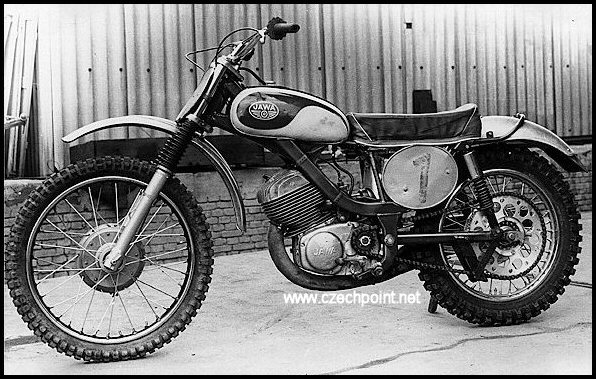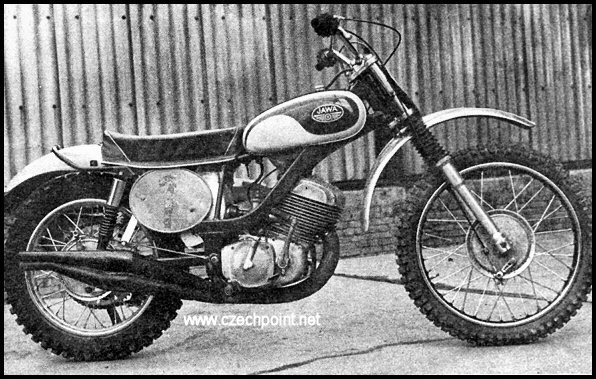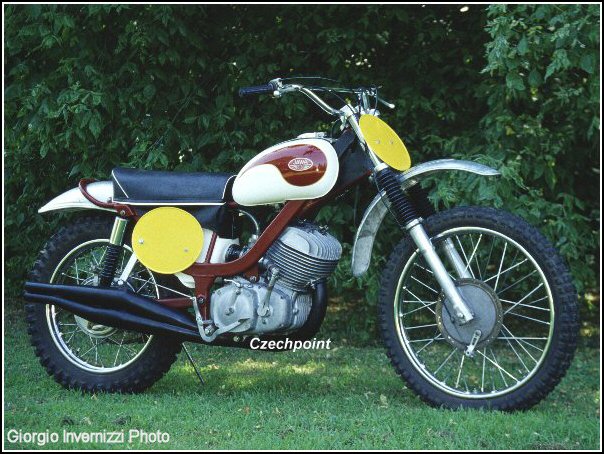The gearing was designed with a view of maximum reliability, and this is why the clutch
was installed on the gearbox. The primary gearing is provided by gear wheels on the right
side that are connected with a dry type multiple-plate clutch of the most contemporary
design. The Ferrodo friction plates have a reduced height involute gearing engaging with
the internal gearing of the clutch drum, which prevents the gearing damage. The
declutching system is based on the well-proven pinion and rack system with a special
declutching bearing.
The basic concept of the last year's five-speed gearbox remained without
a change but the tooth system was enforced by using a larger module and fewer teeth.
The basic frame was again a dual cradle, (Banana), frame, since Jawa
moto-cross and trial motorcycles were supposed to promote the stock types of Jawa
motorcycles with a similar concept of frame. The advantage of this frame type for the
off-road motorcycle was a break resistance; the disadvantage was in a slightly higher
weight.
The front fork with the front wheel was identical to the fork used on CZ
motorcycles; the spring mounting of the rear swing fork used Girling spring units. The
rear wheel with a very effective cushion drive always worked very well on this motorcycle.
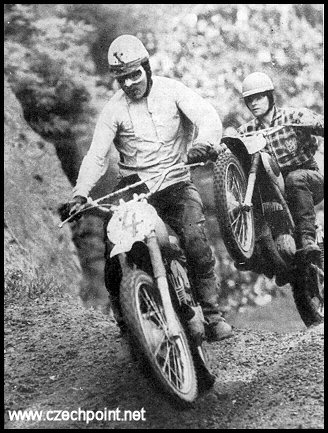
|
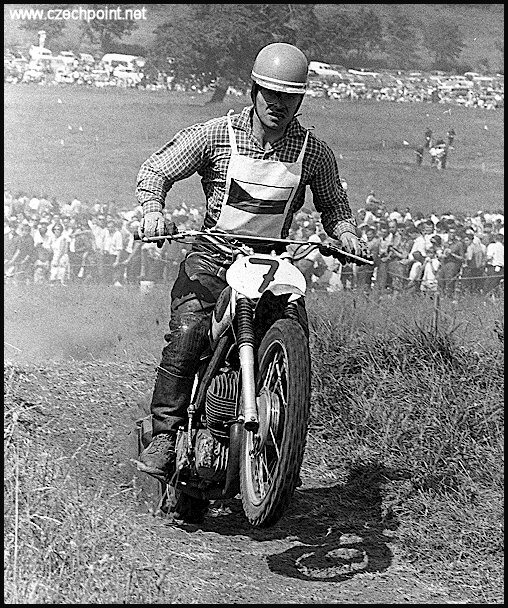
Vlastimil Valek on the 1966 Works"Banana Frame"400 Jawa
(Picture courtesy JiriVrublosky)
Valek chases Paul Friedrichs, Valek finished 4th in the 500cc
world championship in 66 on the Banana Frame 400. (Picture from Czechoslovak Motor Review) |
